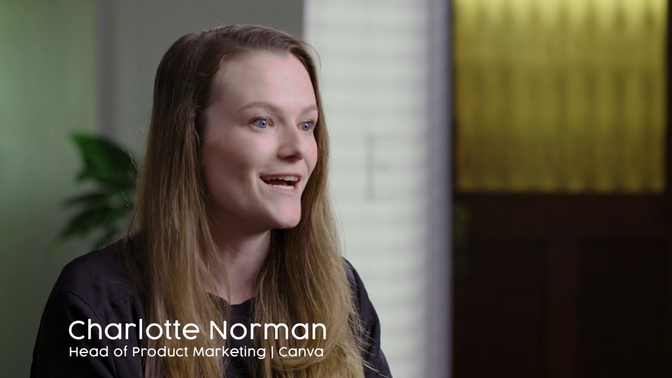
Consumer products
Technology
Canva + UserTesting
Watch how Canva uses human insight to make design accessible to everyone


About the company
Canva is an online platform that makes graphic design accessible for everyone. It offers drag-and-drop feature and professional layouts to design consistently stunning graphics.
Get started now
Contact Sales- 60MActive users after implementing UserTesting
 Improved ease of use and boosted user confidence
Improved ease of use and boosted user confidence- 16KCustomer experience narratives collected to date
The idea for Canva came from watching non-designers trying to use traditional design tools. The Canva team built the first version of their product in late 2013.
The inevitable challenge with launching a product for the first time is not having seen how people would actually use it. So they engaged UserTesting to conduct some exploratory research and discover where they could make improvements. The insights were extremely useful. The Canva team learned just how intimidating graphic design was for many people: users were scared to click much, and when they did, they struggled to know what to do next. Many struggled to create something they loved and left feeling dejected.
The feedback was unanimous: “I’m not creative enough; it’s too hard.” It wasn’t quite the fun journey Canva was hoping users would experience. It became quickly apparent that it wasn’t just the tools themselves that were preventing people from creating great designs, but also people’s own belief that they can’t design. Users’ hesitancy to jump in and explore the platform’s potential had to be overcome.
The Canva team didn’t just need to create an intuitive, easy-to-use graphic design program; they needed to empower people who weren’t graphic designers to believe they could design.
Giving the users a great experience in the first few moments was critical to Canva taking off. They needed to change their users’ beliefs about their own design abilities and make users feel happy and confident to click around and explore.
Based on what they learned, the Canva team optimized their onboarding experience—paying particular attention to their users’ emotional journey—in order to dispel people’s beliefs that they didn’t have the talent, skills, or creative ability to design.
They created a short introductory video to help new users visualize how easy it is to use Canva and to eliminate the preconceived notion that design products are hard to learn. They also created a series of interactive challenges to help users experience small wins, build their creative confidence, and convince them that Canva was easy to learn and fun to explore.
Their redesigned onboarding process has saved hundreds of thousands of people from struggling to use their product. Within a few minutes of using Canva, people feel confident with their abilities, understand how Canva works, and then spread the word.
Improvements to Canva’s user experience played an important role in helping the company grow to more than 60 million monthly active users across 190 countries since implementing UserTesting at scale. Use of our platform across the Canva organization has grown exponentially since then with customer experience narratives increasing by over 500% in the past 3 years alone.
Over the course of our partnership, Canva has run thousands of projects on UserTesting, resulting in over 16,000 customer experience narratives that have changed the way Canva builds and scales its platform. For example, results from some of those insights drove a redesigned customer onboarding experience, an optimized UX and design templates for Canva’s user base, improved advertising campaigns, and more profitable pricing models, to name a few.
The expansive use of our platform and its deep integration into Canva’s decision-making workflows have enabled the company to achieve and maintain high customer satisfaction, adding fuel to Canva’s growth. They achieved a $40 billion valuation in September 2021. Today, teams across Canva continue to use our platform as part of their daily workflows to collect customer/user feedback and human insights for business decision making.
UserTesting helped us understand what our users needed on both a UX and emotional level.Melanie Perkins Founder & CEO, Canva







